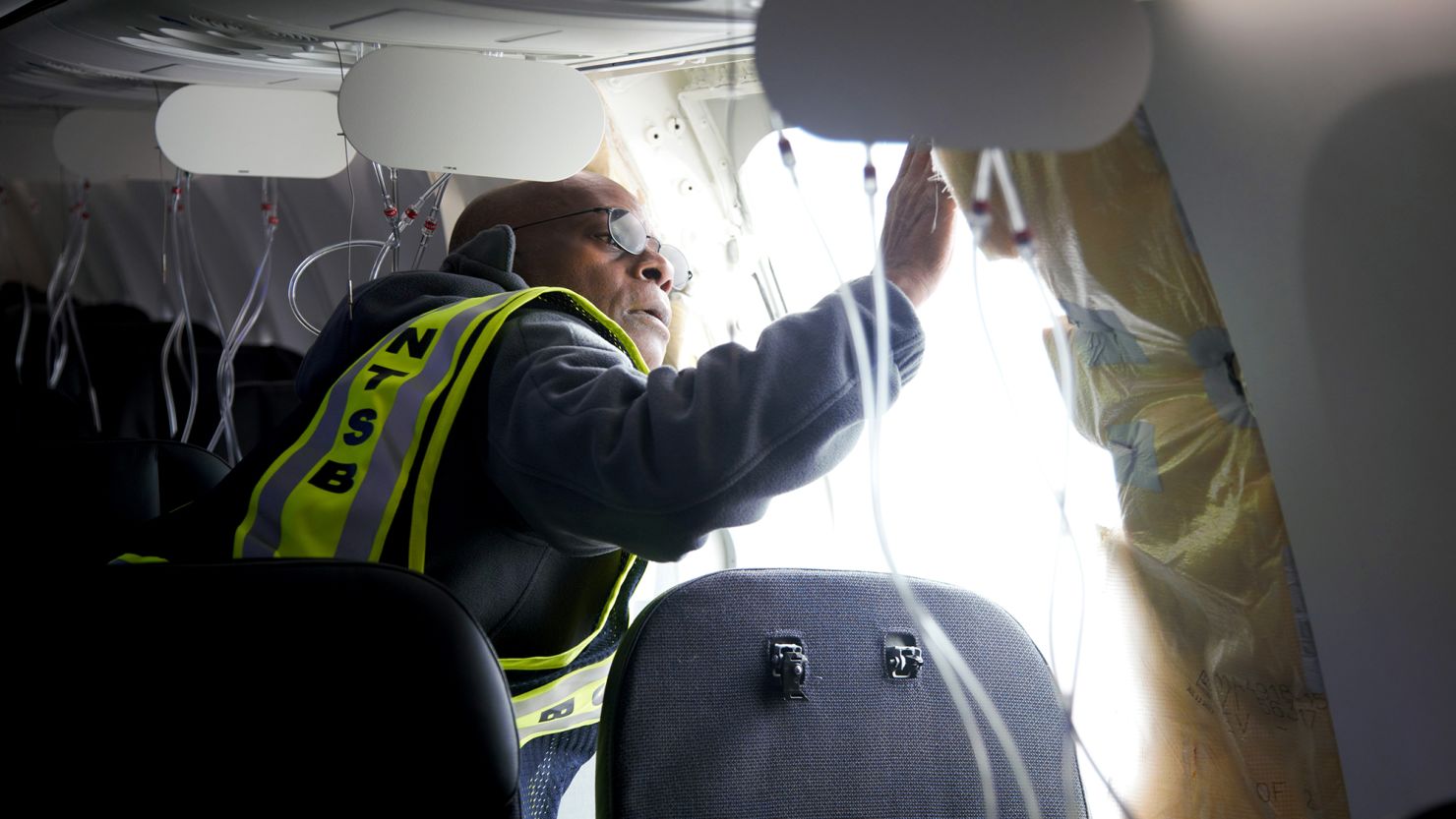Boeing will report a massive loss in the first quarter stemming from the Alaska Airlines door plug blowout on January 5, Chief Financial Officer Brian West said at an investor conference Wednesday.
The beleaguered company said its commercial airplane unit’s operating profit margin would plunge to around -20%. That would be the biggest loss margin at the Boeing unit in two years, since the company had been forced to halt deliveries of its 787 Dreamliner because of other quality issues at that time.
This time, the 737 Max production has been slowed because of the door plug that blew off of a 737 Max 9 on an Alaska Air flight soon after takeoff, leaving a gaping hole in the side of the jet.
Shares of Boeing, a component of the Dow Jones industrial average, were down about 2% in premarket trading on the guidance.
The losses will be in part because of compensation to airlines that owned the Max 9, which was grounded for three weeks after the incident. Alaska Air CEO Ben Minicucci told investors last month that the incident cost his airline about $150 million, and that it expected to be compensated for those losses by Boeing.
The other contributors to losses will be “all the things we’re doing around the factory,” West said, leading to slower production at its 737 Max plant in Renton Washington.
“There are changes that need to happen. There’s no doubt about it,” he noted. “We’re deliberately going slow to get this right. For years, we prioritized the movement of the airplane through the factory over getting it done right, and that’s got to change.”
West said that Boeing would slow production of the Max below the 38 per month it was building at the end of 2023. It had originally planned to increase production this year, but those plans to increase output were halted by the Federal Aviation Administration as it conducts an audit of Boeing’s operations. It has given Boeing 90 days to come up with a plan to fix quality and safety issues for its commercial planes.
West described the audit, which has found wide ranging problems with quality controls at Boeing factories, as “a tougher audit than anything we’ve been through before.”
He said profit margins in the commercial airplane unit, the largest at Boeing, would be negative through the rest of this year, although they will “get better through the year.”
“But if we run the business for the long term, we believe that those margins are going to get to historical levels in the ’25-‘26 timeframe.”
The company’s commercial plane unit had a 14% operating profit margin for 2018, its most recent profitable year.
Higher production rates in the future will allow that return to profitability, according to West, along with the shutdown of what Boeing calls “shadow factories” where planes that come off the assembly line are held back from being delivered to customers for additional work that needs to be done on them.
“There’s a lot that needs to happen between now and then,” he said.
The company reported a $41 million operating profit for its commercial aircraft unit in the fourth quarter, giving it a 0.4% profit margin, the first positive margin at the unit in nearly five years. It faced a 20-month grounding of the 737 Max that started in 2019 following two fatal crashes that killed 346 people that was attributed to a design flaw with the planes. Since the start of that grounding, Boeing has reported total operating losses of $31.5 billion through the end of last year.
While a 20% loss margin is bad, Boeing has seen worse recently, with the loss margin from its commercial airplane unit soaring to 169% in the second quarter of 2020, as it dealt with both the Max grounding and the start of the pandemic. The pandemic caused airlines globally to essentially stop taking deliveries of new jets due to massive losses caused by a near halt in air travel.





